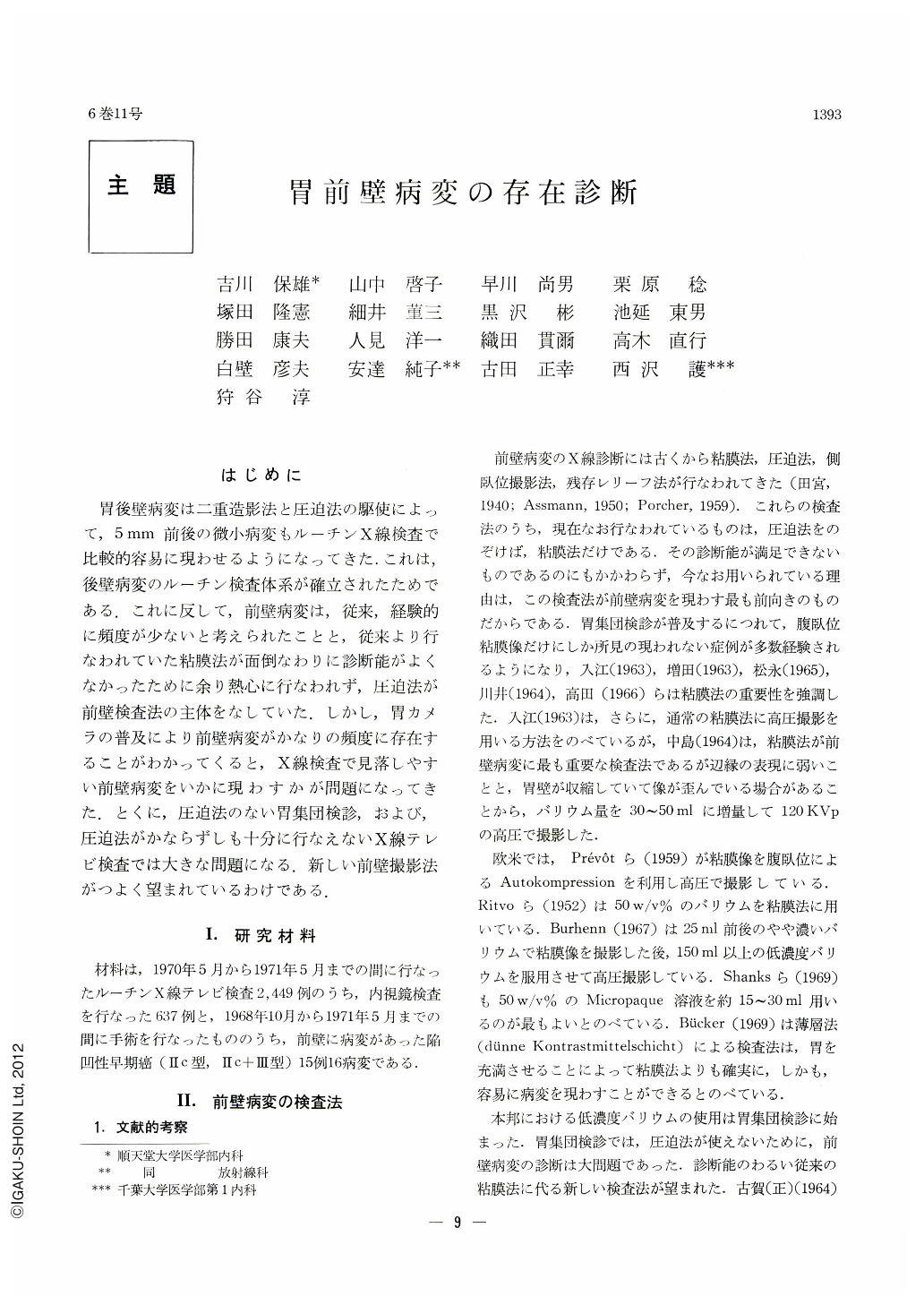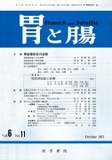Japanese
English
- 有料閲覧
- Abstract 文献概要
- 1ページ目 Look Inside
はじめに
胃後壁病変は二重造影法と圧迫法の駆使によって,5mm前後の微小病変もルーチンX線検査で比較的容易に現わせるようになってきた.これは,後壁病変のルーチン検査体系が確立されたためである,これに反して,前壁病変は,従来,経験的に頻度が少ないと考えられたことと,従来より行なわれていた粘膜法が面倒なわりに診断能がよくなかったために余り熱心に行なわれず,圧迫法が前壁検査法の主体をなしていた.しかし,胃カメラの普及により前壁病変がかなりの頻度に存在することがわかってくると,X線検査で見落しやすい前壁病変をいかに現わすかが問題になってきた.とくに,圧迫法のない胃集団検診,および,圧迫法がかならずしも十分に行なえないX線テレビ検査では大きな問題になる.新しい前壁撮影法がつよく望まれているわけである.
Lesions on the anterior wall of the stomach are being more accurately diagnosed since the rnucosal relief study has been replaced by the double contrast method. They can now be visualized almost true to the macroscopic specimen. However, as was pointed out by Dr. Kumakura, this method is more suitable for detailed examination involving much trouble, and a simpler method of photographing the anterior wall has been eagerly expected. For this purpose, we have exploited in collaboration with Dr. Kariya a new method, coating the stomach wall thinly with lowdensity barium meal with active air insufilation. Its effectiveness has already been reported elsewhere.
In this paper is described its application to the routine x-ray TV examination in order partly to see how much this method is superior in picking up lesions on the anterior wall to the compression method hitherto mainly employed and partly to ascertain if there is more room improvement of this method.
The subjects chosen for this study were 637 cases endoscopically also examined out of 2,449 cases routinely studied by x-ray TV during the period May 1970 to May 1971, together with 15 cases (16 lesions) of Ⅱc type early cancer on the anterior wall surgically removed from October 1968 to May 1971.
When the thin layer method with lowdensity contrast medium was used along with compression in the routine x-ray TV examination, it proved far better in picking up lesions than the usual procedure which uses chiefly compression. The thin layer method alone was also more excellent than compression in the outcome of detection. The former especially surpassed the latter in locating lesions in the corpus.
This fact is an indication that the thin layer method can now take the place of compression study, and it may become an indispensable procedure not only in the gastric mass survey in which compression can not be employed but in the routine x-ray TV examination as well, because also here compression can not be fully utilized.
It should be mentioned here that the thin layer method can not depict the areae gastricae, so that it is of no avail in the diagnosis of minute cancer for which detailed study of these areas is necessary.
As in the double contrasft study of lesions on the anterior Wall, compression should also be used whenever possible in this examination method, because lesions would be all the more clearly visualized then.

Copyright © 1971, Igaku-Shoin Ltd. All rights reserved.


